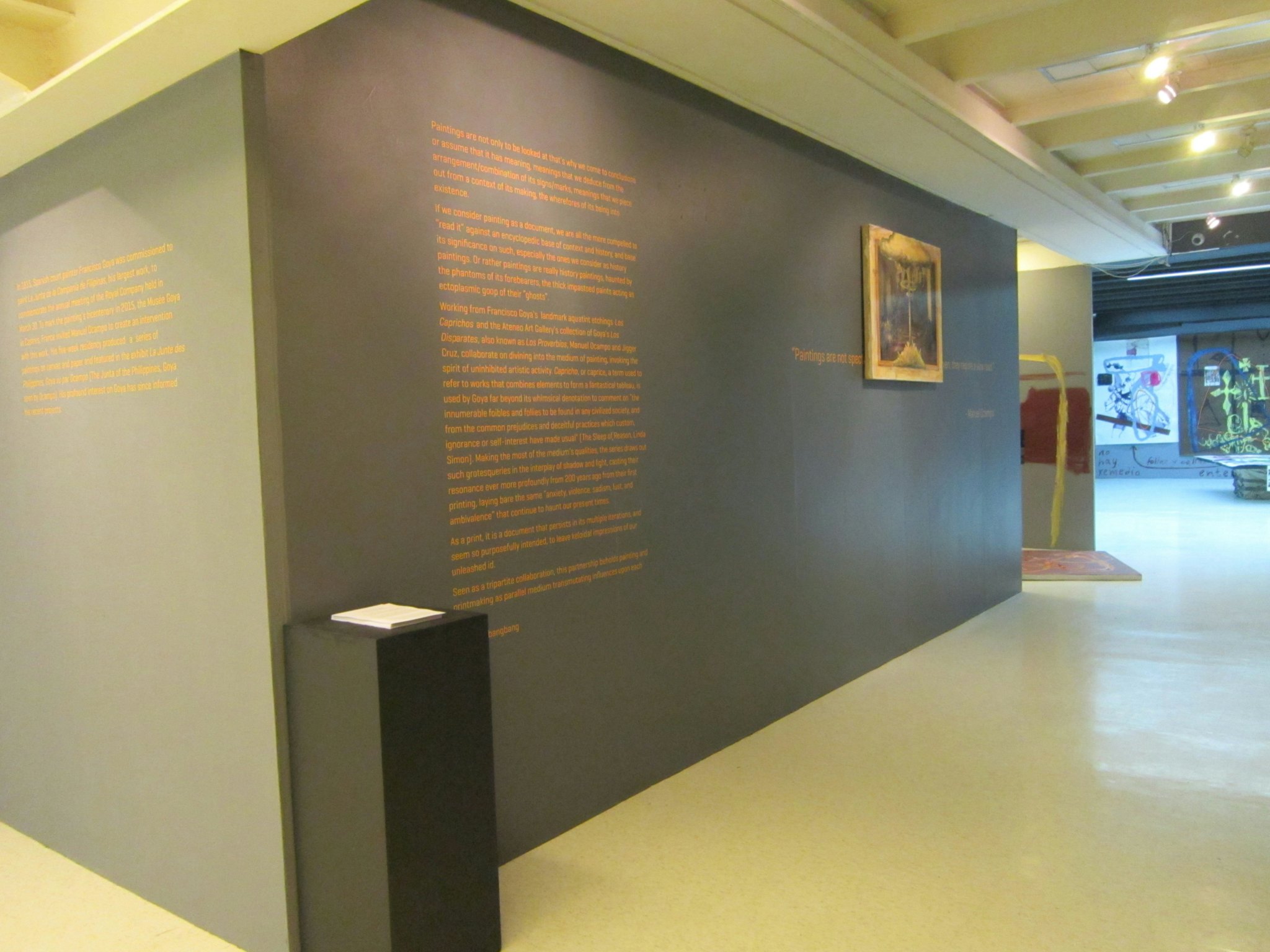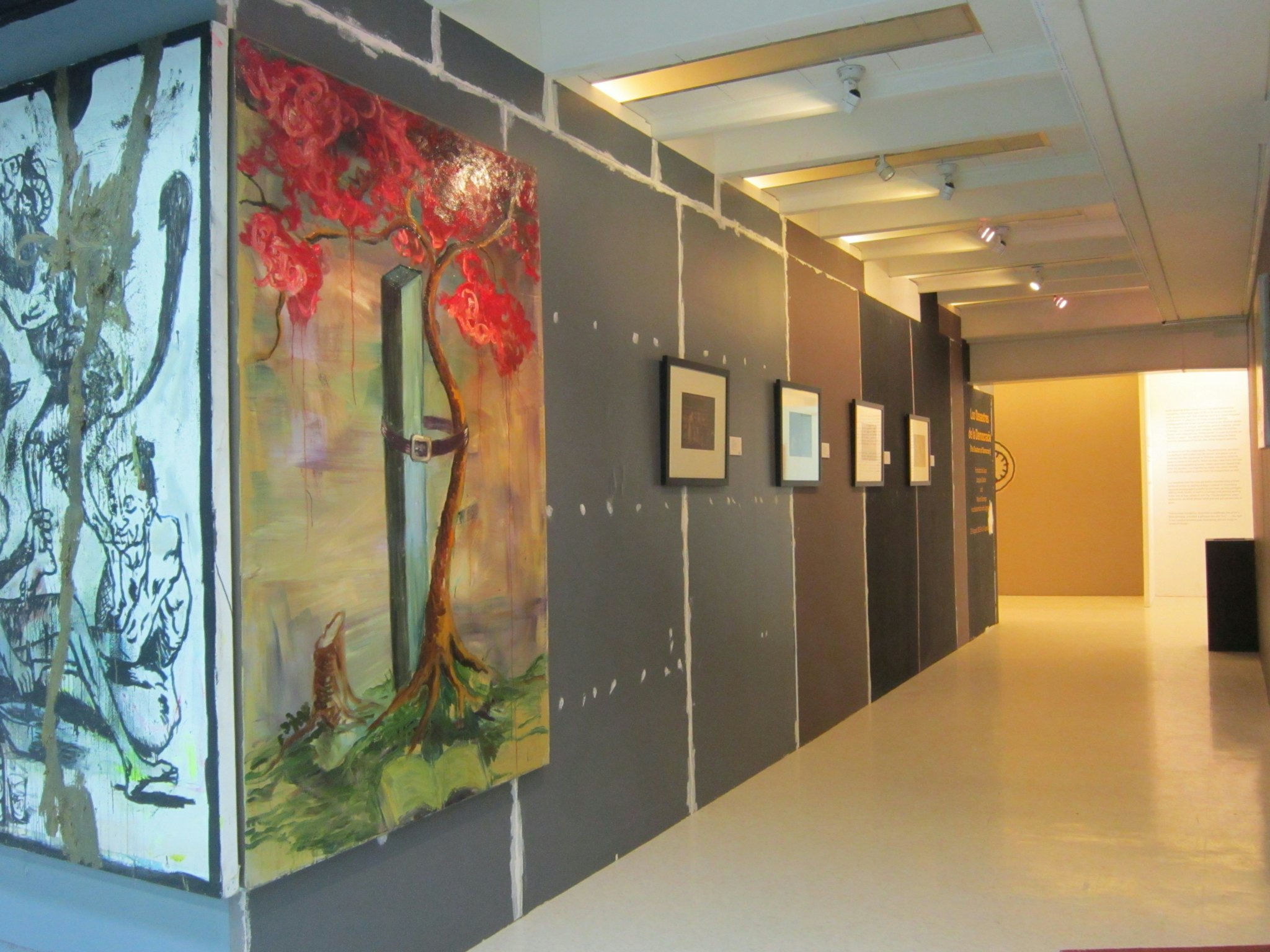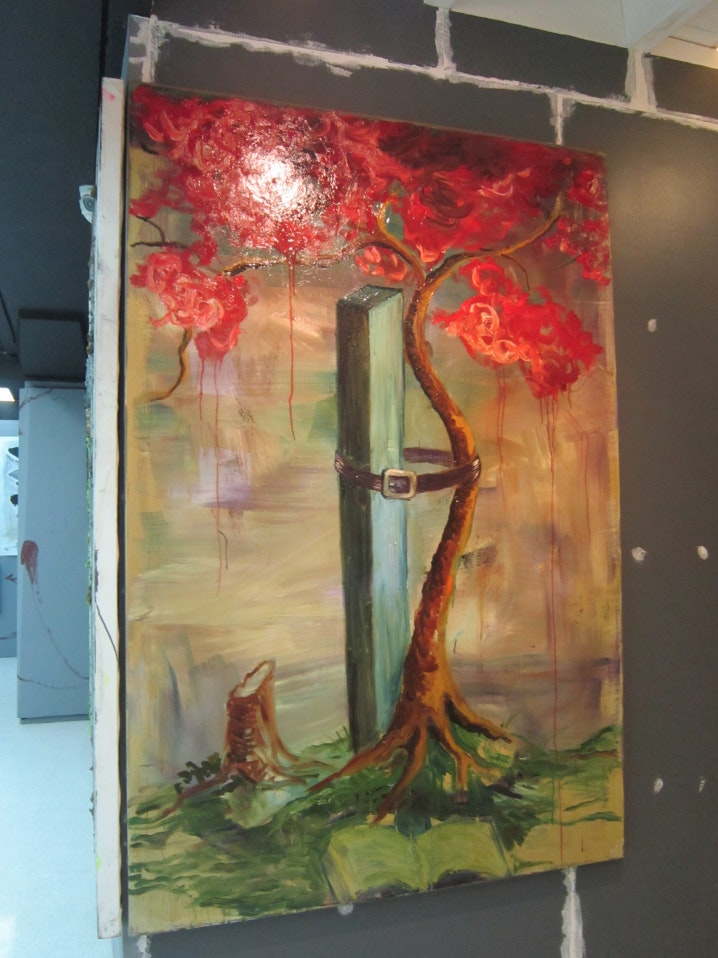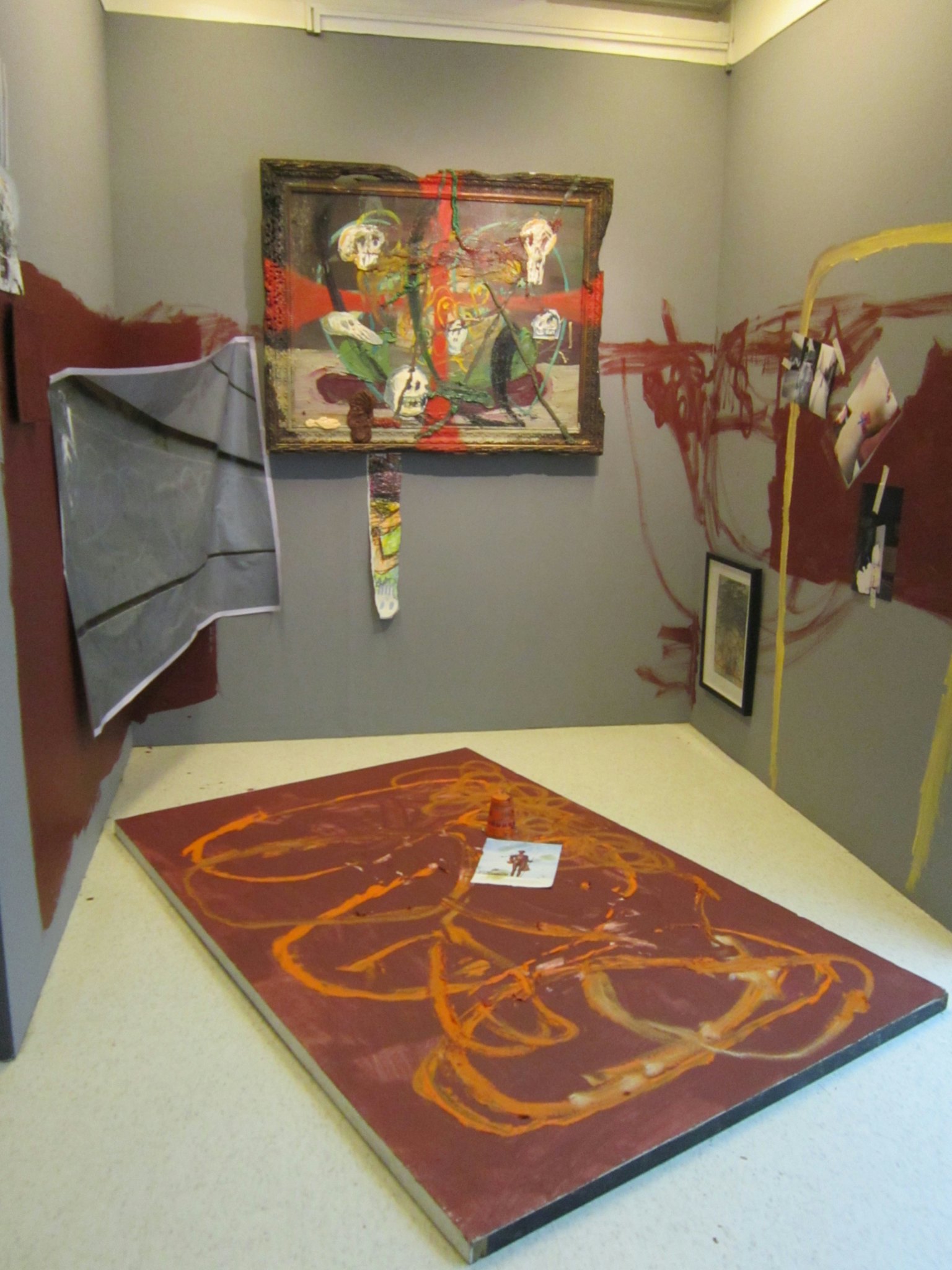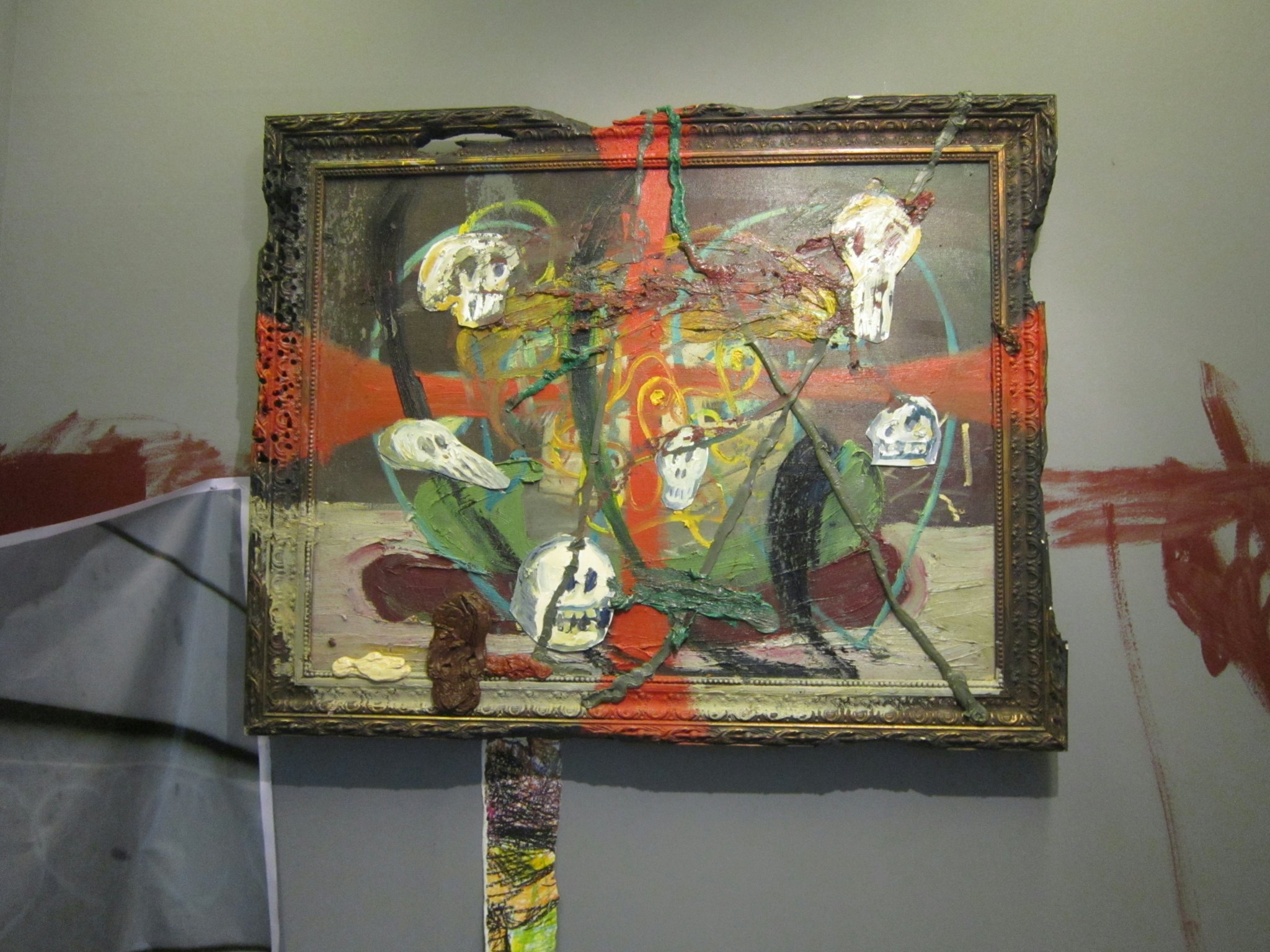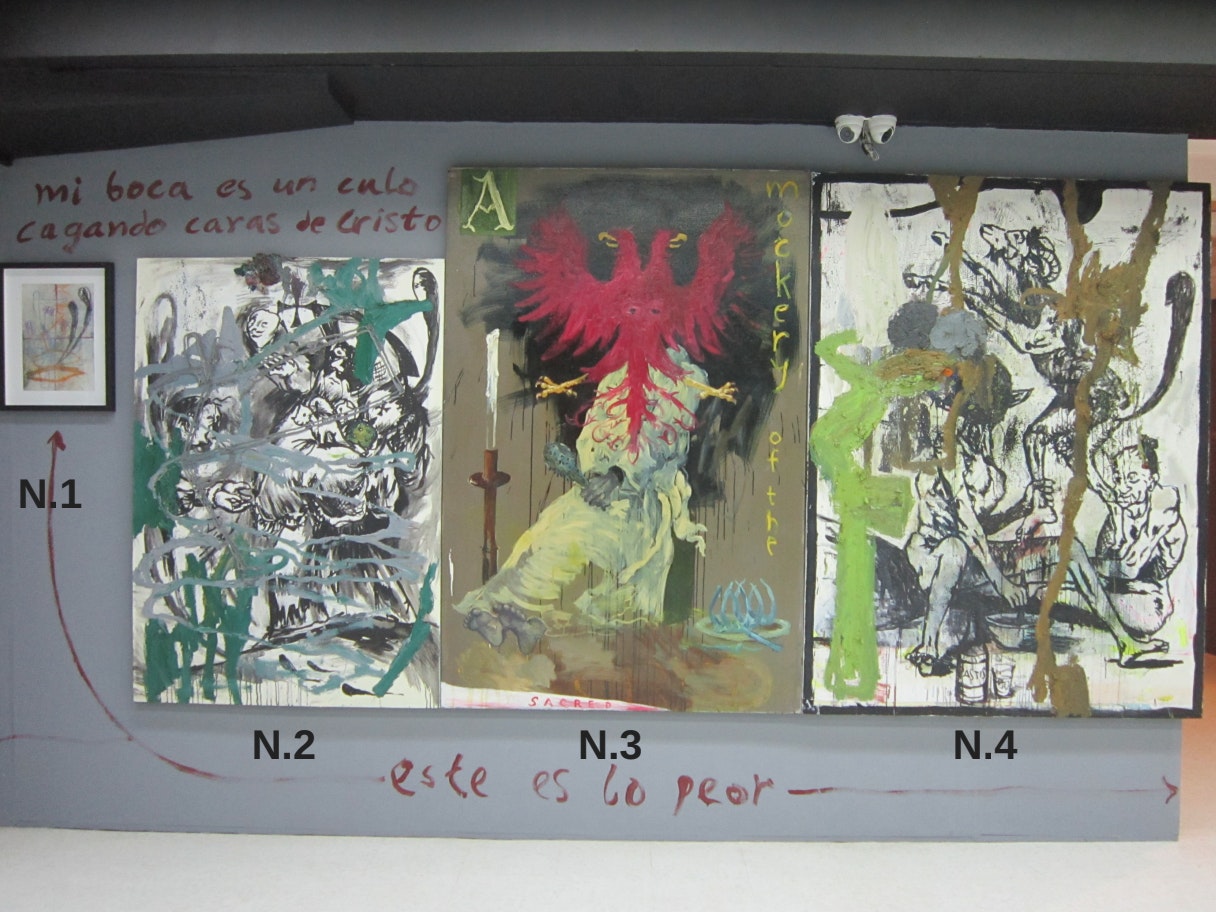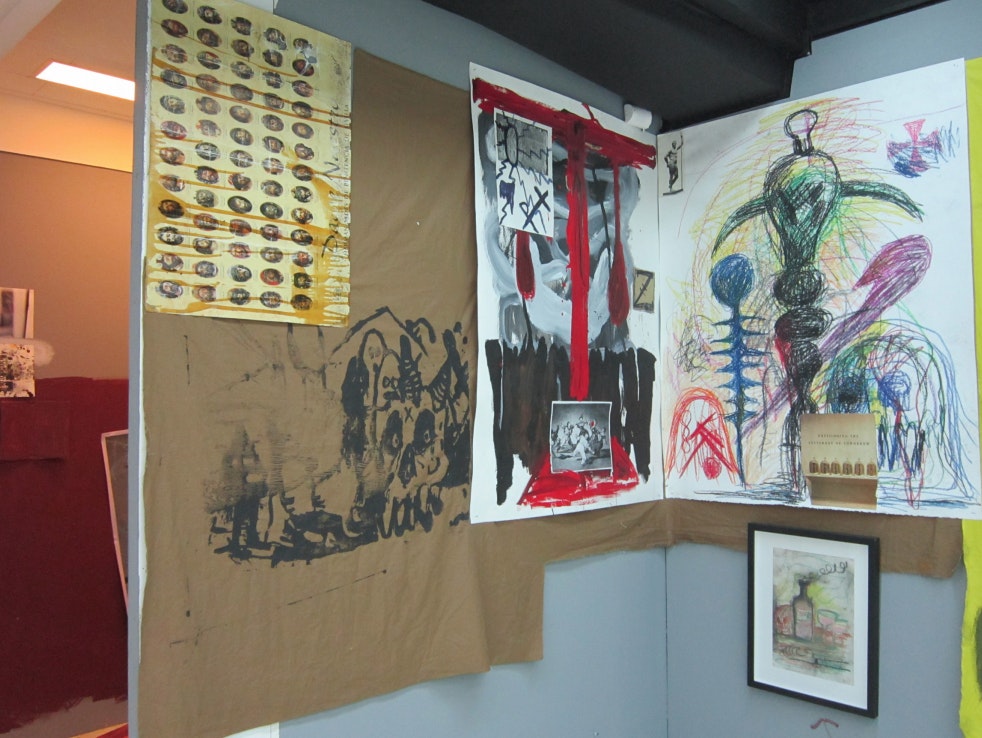Exhibitions

Los Desastres de la Democracia (The Disasters of Democracy)
Monday, 22 Aug 2016 to Saturday, 14 Jan 2017
Level 2, Rizal Library Special Collections Building
Francisco de Goya, Jacques Gaulon and Manuel Ocampo in collaboration with Jigger Cruz
“Paintings are not spectacular, they are not experience driven, they require a slow read.”
Manuel Ocampo from the 2012 issue of Art Asia Pacific by Susan Gibb
Paintings are not only to be looked at that’s why we come to conclusions or assume that it has meaning, meanings that we deduce from the arrangement/combination of its signs/marks, meanings that we piece out from a context of its making, the wherefores of its being into existence.
If we consider painting as a document, we are all the more compelled to ”read it” against an encyclopedic base of context and history, and base its significance on such, especially the ones we consider as history paintings. Or rather paintings are really history paintings, haunted by the phantoms of its forebearers, the thick impastoed paints acting as ectoplasmic goop of their “ghosts”.
Working from Francisco Goya's landmark aquatint etchings Los Caprichos and the Ateneo Art Gallery’s collection of Goya's Los Disparates, also known as Los Proverbios, Manuel Ocampo and Jigger Cruz, collaborate on divining into the medium of painting, invoking the spirit of uninhibited artistic activity. Capriccio or caprice, a term used to refer to works that combines elements to form a fantastical tableau, is used by Goya far beyond its whimsical denotation to comment on “ the innumerable foibles and follies to be found in any civilized society, and from the common prejudices and deceitful practices which custom, ignorance or self-interest have made usual" ( The Sleep of Reason, Linda Simon). Making the most of the medium’s qualities, the series draw out such grotesqueries in the interplay of shadow and light, casting their resonance ever more profoundly from 200 years ago from their first printing, laying bare the same “anxiety, violence, sadism, lust, and ambivalence “ that continue to haunt our present times.
As a print, it is a document that persists in its multiple iterations, and seem so purposefully intended, to leave keloidal impressions of our unleashed id.
Seen as a tripartite collaboration, this partnership beholds painting and printmaking as parallel medium transmutating influences upon each other.
Gallery
